Order:
rowsdower
hungryjoe
cheaptoy
TheDreadPirate
Beau
CarterHayes
brianS
Nibbish
bhiggum
sean
Freealonzo
SoCalTwinsFan
Mike
Algonad
Philosopher
All posts by CarterHayes
77: Had a Ticket But it Got Cancelled
№ 77
Worn by: Tony Batista (2006); Fernando Romero (2018–2019)
Incumbent: Romero
Highest rWAR: Romero, 0.2
Lowest rWAR: Batista, -0.6
Best season: Romero, 0.4 (2018)
Worst season: Batista, -0.6 (2006)
Tony Batista played for the Twins fourteen years ago, which isn't long enough in the past to erase the memories. He was signed as a free agent after being released by the Fukuoka Daiei Hawks, for whom he hit .263/.294/.463 in 591 PA in 2005. This was a period of maddening, self-thwarting, dumpster diving free agent signings that kept the Twins from capitalizing on the core of excellent players the organization had developed. (Also on the 2006 Twins: Ruben Sierra, Phil Nevin, Juan Castro, and RonDL White.) Who knows what Terry Ryan was told by scouts, but I'm guessing it led with "27 homers and 90 RBI." Batista, who wore Nº 7 in Ontario and Quebec, was definitely not getting that number in Baja Manitoba Minnesota. Nor was he getting the Nº 10 he wore in Arizona and Baltimore. Instead, Batista leapfrogged Joe Roa to claim the highest regular season jersey number issued by the Twins to that point.
Batista played exactly 50 games, all of them starts at third base, where he gave statues a bad name with -8 Runs Fielding in 434 innings. (Those interested in more traditional stats will observe the .954 fielding percentage and as many errors (6) as double plays turned (also 6).)
Batista was cut on 15 June. Somehow, the Twins survived Batista's performance and won the AL Central, finishing one game ahead of the Detroit Tigers. Jason Bartlett was called up to take his place on the active roster; Bartlett finished the season with 2.8 rWAR, good for 8th on the team.
No highlights survive of Tony Batista's time with the Twins because there were none to begin with.
Fernando Romero will be 25 this season, and is at a crossroads in his time with the Twins. Romero has stuff — Fangraphs rates his 95–97 mph fastball as a 70/70 — but walks have been a problem in his limited time in Minnesota. Romero has a 1.565 WHIP in 69.2 innings for the Twins, which a strikeout rate just a bit below 20% won't mitigate. He's been better than league average at keeping the ball in the park (SSS). A guy who throws hard and has an okay slider might find a spot in the bullpen, but the Twins aren't flush in fungible bullpen slots when they have guys who throw just as hard, and with better control and, thus far, results. Romero is out of options, so if he doesn't break camp with the Twins, he'll likely be wearing a different uniform the next time he reaches the majors.
Who claims ownership of jersey № 77?
- Fernando Romero (54%, 7 Votes)
- Tony Batista (46%, 6 Votes)
Total Voters: 13
2020 WGOM Draft: Round 11
Order:
Philosofer
Algonad
Mike
SoCalTwinsFan
Freealonzo
sean
bhiggum
Nibbish
brianS
CarterHayes
Beau
TheDreadPirate
cheaptoy
hungryjoe
rowsdower
2: Bass Hit
№ 2
Worn by: Zoilo Versalles (1961–67); Frank Kostro (1968–69); Graig Nettles (1969); Frank Crosetti (1970–71 (as coach)); Bobby Darwin (1972–75); John Briggs (1975); Craig Kusick (1975); Steve Braun (1976); Randy Bass (1977); John Castino (1979–84); Chris Pittaro (1986–87); Wally Backman (1989); Nelson Liriano (1990); Donnie Hill (1992); Pat Meares (1993–98); Luis Rivas (2000–05); Denard Span (2008–12); Brian Dozier (201–18); Luis Arraez (2019)
Incumbent: Arraez
Highest rWAR: Dozier, 23.1
Lowest rWAR: Rivas, -0.9
Best season: Versalles, 7.2 rWAR (1965)
Worst season: Rivas, -1.2 (2003)
Unlike its preceding digit, Nº 2 has a collection of distinguishing achievements in its history: an MVP award, a Rookie of the Year award, and multiple All-Star and Gold Glove nods. Its incumbant might be the
Zoilo Casanova Versalles Rodriguez left Nº 5 behind him in Washington and broke in Nº 2 for the Twins in 1961. His selection for MVP was (and remains, for some) rather contentious, but if you're of the opinion that the MVP should be awarded to position players, Zoilo is a worthy recipient. His 7.2 rWAR led AL position players, just edging Chicago second baseman Don Buford. Teammate Tony Oliva and Detroit's Norm Cash tied for third with 5.4, followed closely by Jim Fregosi (5.3). Zoilo Versalles was the first Latin American player to be named MVP.
Zoilo signed with the Senators when he was 17 and reached the AL at 19, but his MLB career was over at 31. These factors contributed to a pretty tragic story after baseball. According to Zoilo's New York Times obituary, following his death at age 55:
After playing a season in Japan in 1972, Versalles returned to the Minneapolis area but found it virtually impossible to make a living, partly because he had never learned to read or write English and partly because of the lingering effects of a back injury he suffered while running out a ground ball with the Dodgers in 1968.
He held a series of menial jobs, but lost his house to foreclosure and was eventually forced to sell his m.v.p. trophy, his All-Star rings and his Gold Glove award.
In addition to his back problems he suffered two heart attacks and underwent stomach surgery.
In recent years he had been sustained by disability payments, Social Security and memories of a season that came only once.
Graig Nettles wore three numbers during his brief Twins career; Nº 2 was the last. Billy Martin first became his manager at AAA Denver, where Martin replaced Johnny Goryl at the end of June 1968. Martin pressed Nettles into double duty, giving him reps in the outfield as well as third base. When Nettles was called up to Minnesota in September, he played 16 of his 22 games in the outfield. In 1969 he got into 96 games, 74 on defense. With Harmon Killebrew en route to an MVP season and Rich Reese playing over his head with a career year, Nettles got only 21 games at third base. He found himself in something of a platoon with Bob Allison, who was 34 and, while still productive, nearing the end of his career. Nettles started hot, topping out at .316/.371/.561 (.306 BAbip) in mid-May, but bad luck led to a hard fade and he went .190/.303/.613 (.226 BAbip) the rest of the way.
Nettles was heading into his age 25 season when the Twins traded him; Harmon Killebrew turned 34 years old the same year. Nettles put up a 5.2 rWAR campaign in 1970. His manager, Alvin Dark, stuck him a third for the whole campaign. His 101 OPS+ wasn't exciting, but he showed some power with 26 homers, walked more than he struck out, and flashed excellent leather (22 Fielding Runs). The Twins repeated as AL West Champs in 1970, without much help from Luis Tiant, the primary return in the deal that sent Nettles to Cleveland or Rich Reese, who hit .261/.332/.371 (92 OPS+) in 564 PA as the primary first baseman. The Twins released Tiant in March 1971. Reese plummeted to a .219/.270/.353 (74 OPS+) in 359 PA. Harmon Killebrew moved across the diamond to first base, and 23 year old rookie Steve Braun took over at the hot corner. Braun didn't embarrass himself, turning in 1.0 rWAR year, but the Twins fell from first to fifth in the West. Nettles swatted 28 homers and displayed a fine eye (82 walks to 56 strikeouts), ending 1971 with a 114 OPS+ and 30 Fielding Runs. All that was good for a 7.5 rWAR season, just short of double César Tovar's total, which led the position player ledger of the '71 Twins. Braun eventually wore Nettles' Nº 2 in 1976, which was his last year in Minnesota. More on his story another time.
Three seasons after Braun's departure, the Twins finally seemed like they might fill the hole they created by trading Nettles when John Castino split co-Rookie of the Year honors with Toronto's Alfredo Griffin. (Between 1971–1979 Nettles put up 41.8 rWAR, including an MVP-worthy 8.0 rWAR year in 1976. Nettles finished 16th in MVP voting, tied with Baltimore-era Reggie Jackson. This is the only time anyone will ever hear me say a Yankme was robbed of an MVP.) Castino's rookie season was a solid 2-win effort. Castino hadn't played a game above AA Orlando when he made the major league roster out of Spring Training in 1979. His .285 batting average drew favorable notice in the era, surprising even his manager, Gene Mauch; his .331 OBP and .112 ISO speak to the shape of his overall production at the plate. Castino's defense, however, drew more than one comparison to Brooks Robinson, who had retired partway into the 1977 season. Mauch might have seen Robinson play at age 19 or 20, when they briefly overlapped in the American League, but given that Mauch spent Robinson's heyday managing the Phillies and Expos, one wonders exactly how much eyeball time he had to draw the comparison. Brooks, for his part, accepted it, saying that Castino's throwing & actions reminded him of himself, and opining that Castino looked to already be a fine fielder.
In fairness to Castino, that much was true. From 1980–1983, his glove contributed 36 Fielding Runs' worth of value to the Twins' defense, even though he played fewer than 120 games twice in that span. The limited playing time was due not only to the '81 strike, but the discovery of a back problem that ultimately cut his career short. X-rays taken after Castino was injured diving for a ball late in the second half of the season resulted in a spondylolysis diagnosis. Castino tried playing through it at first, but had to back off. Doctors ultimately performed a spinal procedure that fused a couple of his vertebrae together. Atrophied from a winter in a body cast, Castino tried to play out the '82 season at a new position; Gary Gaetti's arrival shifted Castino over to second baseThe results supported Castino's after-the-fact observation that he was not ready to resume playing baseball that year. Who knows whether a year of PT and gradual adjustment back to the game would have changed anything for him, given the therapies available at the time. Castino only got one more year on the diamond, playing second base and matching his career-best with another 4.5 rWAR season. With Castino under contract through the 1987 season, the mid-Eighties Twins might have had some interesting choices to make to find enough playing time between second & third for him, Gaetti, and rookie Tim Teufel. Unfortunately, those good problems never materialized. Castino's back limited him to 9 games in 1984, and that was it. Just as the Twins were starting to turn their fortunes around with the maturation of the core of the cohort of prospects that won the '87 World Series, Castino's career was over. He was 29. He appeared in just 666 games and made only 2578 plate appearances. Thirty-six years later, Castino's 39.3 Fielding Runs still place him 5th among Twins infielders and 10th among all position players. Brooks Robinson & Gene Mauch were right — he turned out to be a pretty good fielder.
Chris Pittaro wore Nº 2 next. Pittaro is perhaps most notable for the scouting & front office career he began with the Athletics in 1991. That gig reunited Pittaro with his Twins teammate Billy Beane; he became one of the Oakland front office characters named in Moneyball, is still a special assistant to Oakland GM David Forst.
Wally Backman managed to achieve -0.7 rWAR in just 87 games and 337 PA for the '89 Twins. He can thank Luis Rivas for sparing him the honor of worst season while wearing Nº 2.
Pat Meares had the unenviable task of succeeding Greg Gagne as the Twins' primary shortstop. Younger and cheaper, Meares' Twins tenure nevertheless was not as valuable as the five seasons Gags split between Kansas City & Los Angeles to end his career:
| Guy | PA | OPS+ | TB | Rfield | rWAR |
|---|---|---|---|---|---|
| Meares ('93–'98) | 2658 | 76 | 938 | 10 | 6.0 |
| Gags ('93–'97) | 2512 | 83 | 865 | 31 | 8.4 |
Luis Rivas broke in as a full-time player in 2001 & was the second baseman when the Twins began their resurgence in the early 2000s. Unfortunately, he contributed little to that effort. Rivas made over 2000 plate appearances, mustering an 80 OPS+. His hitting was a mirror of his fielding: Rivas' -54 Batting Runs made a potent statement at the plate, while his -51 Fielding Runs made his defense conspicuous. In the five seasons Rivas was (or began the season as) the Twins' primary second baseman, the team went 444-365. Many more things about Luis Rivas, but suffice it to say that he was the starting second baseman on a string of successful Twins teams, often plying his trade in the Nº 2 hole (666 PA). I don't remember who came up with the nickname (Gleeman?), but I'll always remember him as "Luis Oh-for-ThRivas."
For five seasons Denard Span blended excellent outfield defense, solid on-base skills, and good baserunning. Span's glove ranks 6th among Twins outfielders with 39.0 Fielding Runs, and places him 11th among all Twins position players. One of the great DSPAN2 fun facts is that he was — at least by one definition — the most exciting player on the Twins' roster: he hit 36 triples (half his career total) with the Twins, against 23 homers. A concussion and some other injuries intruded on his playing time, so he was only the primary center fielder twice during his Twins tenure, but he was nonetheless a very solid player during the last few years in the Metrodome and the first few at Target Field.
The Twins traded DSPAN2 in November 2012, sending him to the Nationals for pitching prospect Alex Meyer. The next season, Brian Dozier made two significant changes: he moved from shortstop to second base, and he took over Nº 2. Dozier had worn different numbers at AAA Rochester and Southern Mississippi, and neither his birth date or month suggest an attachment to the number. The new position minimized some defensive shortcomings. Dozier's defense at second base was very strong in 2013, but he never matched it again, and by 2018 was a bit of a liability in the field. Nonetheless, Dozier put together a string of seasons that gave a whole different shape to the position, something Twins fans had not seen in over fifty years: the slugging second baseman. In his five full seasons with the Twins, Dozier averaged 29 home runs per season. In 2016, he became the first Twin hit 40+ homers since since Harmon Killebrew in 1971. Dozier carried a .202 ISO into his last season with the Twins, slipping to .199 before the Twins sent him to the Dodgers at the trade deadline. Measured by rWAR, Dozier was the most successful player to wear Nº 2.
For all the Bomba Squad excitement last season, Luis Arraez might have been the Twins' most interesting hitter to watch at the plate. One plate appearance rarely is enough to define a player, but Arraez' pinch hitting appearance after Jonathan Scoop injured himself down 0-2 to fireballer Jeurys Familia on July 16 was really dang cool. It will be interesting to see what he can do with a full-time gig at second this season.
Who claims ownership of jersey № 2?
- Zoilo Versalles (50%, 6 Votes)
- Brian Dozier (33%, 4 Votes)
- Denard Span (17%, 2 Votes)
- John Castino (0%, 0 Votes)
- Luis Rivas (0%, 0 Votes)
Total Voters: 12
80: Out on the Loose
Note: Any time the a number has only been issued to a coach, that number will be skipped and collected in a special post of coach numbers near the end of the series.
№ 80
Worn by: Ryan Eades (2019)
Incumbent: none
Highest rWAR: Eades, 0.2
Lowest rWAR: Eades, 0.2
Best season: Eades, 0.2 (2019)
Worst season: Eades, 0.2 (2019)
Ryan Eades pitched 3.2 innings across two games for the Twins in 2019 after a mid-season call-up from AAA Rochester. Eades replaced Willians Astudillo on the active roster on 08 June and wasted no time getting into a game. Of the sixteen batters he faced, Eades struck out five, walked two, and surrendered four hits, none of which were home runs. He allowed two stolen bases.
The first was by Niko Goodrum with two down in the bottom of the Detroit 6th on 08 June; the Tigers were up 5-2, but likely felt they needed every run they could get. Rocco Baldelli challenged the call, but it was upheld. Eades walked the batter, but recovered and struck out Nick Castellanos to end the inning. The Twins lost the game.
The second stolen base came in the top of the 8th against the Mariners on 12 June. Eades was the third pitcher of the inning for the Twins. The score was tied 1-1 when Trevor May began the inning in relief of Mike Morin. May gave up a walk and a single, then Domingo Santana hit a sac fly to score the lead runner, Edwin Encarnacion. Blake Parker was called in with one runner on and one out. Parker gave up a single to Omar Narvaez that did not score Dan Vogelbach. Dee Gordon reached on an error by first baseman C.J. Cron, scoring Vogelbach. Then, Blake Parker coughed up a three-run homer to Shed Long. Parker was yanked for Eades, who struck out Dylan Moore for the second out. Mallex Smith hit a single, then stole second. He gained third on Mitch Garver's throw, but Eades struck Kyle Seager out to escape the inning. The Twins tied it up over the next two innings while Eades held the Mariners in check. Tyler Duffey replaced Eades in the 10th, the Twins’ defense gave up three runs on three errors, and they lost 9-6.
Eades was sent back to Rochester for his trouble; Fernando Romero came up to take his roster spot. The Orioles claimed Eades off waivers on 14 August; he pitched 11.1 innings for Baltimore down the stretch. Eades was outrighted by the Orioles in October and is currently a free agent.
1: Not the Onliest Number
№ 1
Worn by: Reno Bertoia (1961); Billy Martin (1961, 1965–68 (as coach), & 1969 (as manager)); Bernie Allen (1963–64); Eric Soderholm (1971–72); Rich Reese (1973); Sergio Ferrer (1974–75); Jerry Terrell (1975–77); Larry Wolfe (1978); Jesus Vega (1980); Tim Corcoran (1981); Ray Smith (1982); Houston Jimenez (1983–84); Alvaro Espinoza (1984–86); John Moses (1988–90); Jarvis Brown (1991–92); Alex Cole (1994–95); Otis Nixon (1998); Jay Canizaro (2000, 2002); Jason Kubel (2004); Luis Castillo (2006–07); Orlando Hudson (2010); Tsuyoshi Nishioka (2011–12); Alex Presley (2013); Sam Fuld (2014); Jordan Schafer (2014–15)
Incumbent: none
Highest rWAR: Castillo, 3.7
Lowest rWAR: Jimenez, -1.4
Best season: Hudson, 2.9 rWAR (2010)
Worst season: Jimenez, -1.2 (1984)
Reno Bertoia came to Minnesota with the Twins in 1961, and brought the number he had worn with the Senators along in his suitcase. (Born in Italy as "Pierino," he is the only "Reno" to play in MLB.) Bertoia was the starting third baseman in the Twins' first game; they defeated the Yankees 6-0 at Old Yankee Stadium. He played 35 games, then was traded on 01 June with Golden Gopher Heismann runner-up Paul Giel — a native of Winona, Minn — to Kansas City. The same day, Milwaukee traded Billy Martin to the Twins. Both men were listed at 5' 11"; Martin took over the number. While Martin has more to his story than just that, both men are exemplars of one of the primary types of player to wear this number: banjo-hitting infielders. Another group — banjo-hitting, fleet-footed outfielders — reached its fullest expression in the late Eighties to late Nineties.
Martin, of course, is known best for his exploits & altercations while manager of the '69 Twins, who finished first in the new AL West during his only year at the helm. Much could be said about Billy Martin; suffice it to say he's a significant character in the story of the Twins' greatest period of dominance.
No Twin wore Nº 1 in 1962, but after Bernie Allen picked it back up midway through the 1963 season, the number stayed in circulation until 1970. Eric Soderholm wore it for two seasons with a 72 OPS+ over 391 PA, then switched numbers and put up a 117 OPS+ over his last remaining 1136 PA as a Twin. The guys who came after Soderholm didn't find any better success wearing it, and then Twins didn't issue the number to anyone in 1979. In 1982, Ray Smith became the first — and so far, only — catcher to wear Nº 1 for the Twins.
After another break in 1987, John Moses was issued the number and started the above-mentioned run of fast, light-hitting outfielders that ended with Otis Nixon. Moses had his career year in '88, an okay year in '89, and, along with the rest of the team, crashed to Earth hard in '90. Jarvis Brown wore Nº 1 in 1991. Had Gene Larkin not pinch-hit for him in the bottom of the tenth in Game 7, Brown might be the least-remembered position player on the Twins '91 World Series roster. (We'll get to the guy who could claim that title later in this series.) Alex Cole brought Nº 1 back into circulation with a solid year in 1994, batting .296/.375/.403 (102 OPS+) over 398 PA, with 15 doubles, 5 triples, and 29 stolen bases (78% success rate). Cole was the Twins' first primary center fielder following Kirby's move to right field, but unfortunately for him, his incumbency lasted only lasted one year. He was off to a solid start in 1995, but must've gotten injured; he missed every game from 01 June through 22 September, and apparently did not play in the minors. Three seasons later, Nº 1 was issued to Otis Nixon, who had worn the same number in Atlanta. By the time he reached the Twins, Nixon was just two years younger than Billy Martin was when he became the manager of the 1969 Twins. Nixon stole 37 bases — with an 84% success rate! — for the Twins, which nearly doubled the franchise's previous high water mark for a player 39 years old or older. (Lave Cross stole 19 bases in his age 40 season for the 1906 Senators. Paul Molitor held the post-relocation record, with 18 in 1996.)
The past twenty years have seen Nº 1 alternate between Gardenhire-era second basemen and fifth outfielders — with one exception: Jason Kubel wore it as a September call-up by the 2004 Twins. Kubel looked really impressive, hitting .300/.358/.433 (.320 BAbip, 104 OPS+) over 67 PA. He was 22. After that first cup of coffee, Kubel blew out his knee in the Arizona Fall League. When he returned to the Twins in 2006, he did so wearing a different number. One wonders what might have been.
Whether Kubel wanted a new number or not, part of the reason he wasn't reissued Nº 1 was that Luis Castillo was wearing it. Castillo came to Minnesota in a December 2005 trade from Florida — where he had worn 1 since 1997 — to fill what had been a gaping hole for the Twins since the Chuck Knoblauch trade. Castillo put up 2.3 rWAR for the best post-Knoblauch season at the keystone in his first year, and followed it up with 1.4 rWAR the next before a deadline deal sent him to the Mets. The Twins proceeded to flail around again until Orlando Hudson signed a one-year free agent deal for 2010. O-Hud put up the best single season for the № 1 jersey (in what remains the single best post-Knoblauch season at second base), and the Twins won 94 games and repeated as AL Central champs in their first year in Target Field. Hudson was allowed to walk after the season, which turned out to be his last decent year. He was known to be a chatterbox, and — if Poultry Man is a credible source — complete wore out his welcome. The Twins elected to assign № 1 to their new second baseman, Tsuyoshi Nishioka, who came over from the Chiba Lotte Marines. Nishioka had won the batting title in his last year in Japan, which lended some excitement to the Twins' first acquisition from NPB. Six games into the season, Nick Swisher broke Nishioka's left fibula with a takeout slide. Nishioka missed all of May and half of June. The Twins lost 99 games, and General Manager Bill Smith was fired in November. After a poor showing in 2012, Nishioka asked for and was given his release, despite having a third year left on his contract. He returned to Japan and played for the Hanshin Tigers until 2018.
Nick Gordon wears № 1 for the Rochester Red Wings. He appears to be the successor to the Punch and Judy infielder line, but his future in the organization is more doubtful than his draft number once suggested. The frequency with which the Nº 1 is assigned to players has also dropped since its near-ubiquity from 1961–1995. Whether this is incidental or by design is hard to say. There are only ten single-digit numbers, and the Twins have already retired three of them. Whether the Twins have gotten more selective about who gets them remains to be seen in future installments.
Who claims ownership of jersey № 1?
- Billy Martin (58%, 7 Votes)
- Luis Castillo (42%, 5 Votes)
- Jarvis Brown (0%, 0 Votes)
- Alex Cole (0%, 0 Votes)
- Orlando Hudson (0%, 0 Votes)
- Tsuyoshi Nishioka (0%, 0 Votes)
Total Voters: 12
0 and 99
Let's begin with 0 and 99. No, not the Twins' record in the postseason since Game 1 of the 2004 ALDS. This is about the bookends of the uniform number spectrum.
Uniform numbers evoke the memory of the players who wore them — their personalities, their accomplishments, mental snapshots of iconic moments. The Twins have retired eight numbers worn by members of the organization. In order of retirement, they are: 3, 29, 6, 14, 34, 28, 10, and 7. Since the Twins made Harmon Killebrew's 3 the first retired number in franchise history on 4 May 1975, the longest duration between number retirements was the 5165 days between Kirby Puckett's 34 (25 May 1997) and Bert Blyleven's 28 (16 July 2011). The longest duration then rolled into the shortest duration; just 420 days after the Frying Dutchman's number was retired, Tom Kelly's 10 joined it. No player had been issued the number since TK stepped down as manager after the 2001 season, and 10 became the first number retired to honor a Twin who didn't play while wearing it. We‘ll eventually circle back around to the retired numbers; they burn brightly in our memories — or, if we never saw them worn on the field, in our baseball consciousness.
Every uniform number in Twins history has a story, however, and each number that has not been retired likely has a de facto "owner" in the minds of Twins fans. In the course of this series, we're going to discover who some of those players are. Both numbers in this post have only been worn by one player in Twins history, making those players the default owners of their number in the minds of Twins fans — assuming Twins fans remember them.
№ 0
Worn by: Junior Ortiz (1990–1991)
Incumbent: none
Highest rWAR: Ortiz, 1.7
Lowest rWAR: Ortiz, 1.7
Best season: Ortiz, 1.5 rWAR (1990)
Worst season: Ortiz, 0.2 rWAR (1991)
Junior Ortiz isn't likely the least-remembered player on the 1991 World Series roster, but nearly three decades after the Twins' last world championship, he's no longer a household name. Ortiz had actually worn 0 prior to joining the Twins; he wore it in his last year in Pittsburgh, where he was the primary catcher that season. (Was Mike "Spanky" LaValliere hurt?) One might presume he chose it because it evoked his last initial. In those days the Twins wore their names on the back of both the road and home jerseys, but one could still forgive the redundancy; it's a cool choice.
Ortiz was Scott Erickson's caddy, for reasons that have never been quite clear to me. The other pitchers in the rotation threw to Harper just fine. But, Erickson was known to be particular, and that particularity means he & Junior Ortiz will be forever linked. Ortiz got 8 plate appearances in the 1991 postseason thanks to that relationship. Three came in Game 3 of the ALCS, and he got another two apiece in Games 3 and 6 of the World Series. In fact, he was the starting catcher in the elimination game, thanks to Erickson getting the ball. He was pinch-hit for in the later innings of both games. Ortiz also replaced Steve Bedrosian as part of a double switch in the Game 5 blow-out. Bedrosian had entered in an earlier double-switch, knocking Chuck Knoblauch out of the game. With one out in the ninth, Ortiz grounded to third, scoring Gladden for the Twins' last run of the game.
Ortiz went on to wear 0 for two more teams, Cleveland and Texas, before retiring in 1994. As far as I can tell, Junior Ortiz is the second most prolific wearer of 0 in baseball history when measured by the number of different teams that issued him the number.
№ 99
Worn by: Logan Morrison (2018)
Incumbent: none
Highest rWAR: Morrison, -0.3
Lowest rWAR: Morrison,-0.3
Best season: Morrison, -0.3 rWAR (2018)
Worst season: Morrison, -0.3 rWAR (2018)
When Logan Morrison wore 99 in the starting lineup on 29 March 2018, it became the highest number worn on the field by a Twins player history since 11 June 2006. (We will get to what that number was in due time.) Unless and until the Twins have a Yankme problem and run out of numbers, that's not likely to change. Morrison had never worn 99 before joining the Twins, and he didn't exactly put an indelible mark on it while in Minnesota. He lasted 95 games and 359 PA for the Twins, which is honestly more than I remember. Given Morrison's 74 OPS+, I bet it seemed longer than that at the time, however. LoMo played 29 games with the Phillies last year, but wore 8, which was another uniform first for him.
Having finally gotten into circulation, the number itself is too good to waste on languish with LoMo. Given the right player and personality, 99 should find its way back onto the field.
But, a question — is it best reserved for a gas-throwing reliever, a toolsy position player, or simply any player with a unique personality?
2020 WGOM Draft: Round 8
Order:
rowsdower
hungryjoe
cheaptoy
TheDreadPirate
Beau
CarterHayes
brianS
Nibbish
bhiggum
sean
Freealonzo
SoCalTwinsFan
Mike
Algonad
Philosopher
Angélique Kidjo – Afirika
Angélique Kidjo‘s Celia, a contemplation of Celia Cruz’s African roots, might be my favorite album of the year. Maybe I should’ve chosen a video of her singing “La Vida es un Carnaval” or “Bemba Colorá” or “Sahara” for this, but I wanted to showcase Kidjo’s interaction with her audience at her BBC Proms debut this year. I can’t help but smile every time I watch it. This music, this kind of performance draws hearts together. In the weeks to come, I think we could all use a good reason to smile together.
29 October 2019: First Snow
The Poissonnière was quite excited to see the season’s first blanket of snow on the ground when she woke up this morning, which made me glad. I’ve been trying to help calibrate her sense of cold weather, being very mindful to not describe temps above freezing as “cold,” and resisting some pressure to bundle her up when the fall weather turns chilly. That’s not an easy balance when each parent has pretty disparate thresholds for cold tolerance. But I do think people are generally happier if they don’t view the weather as intimidating or oppressive in some way.

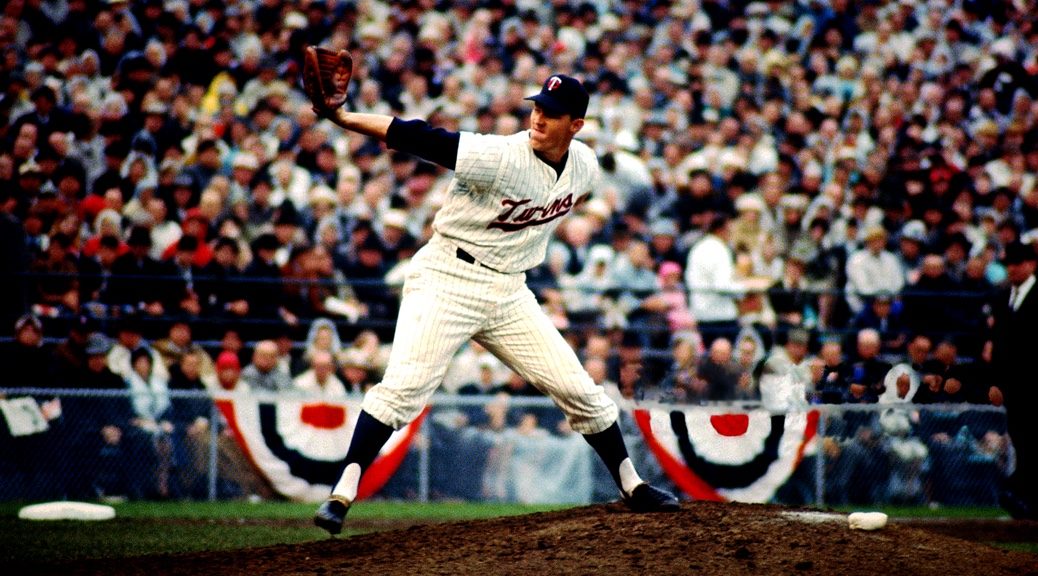
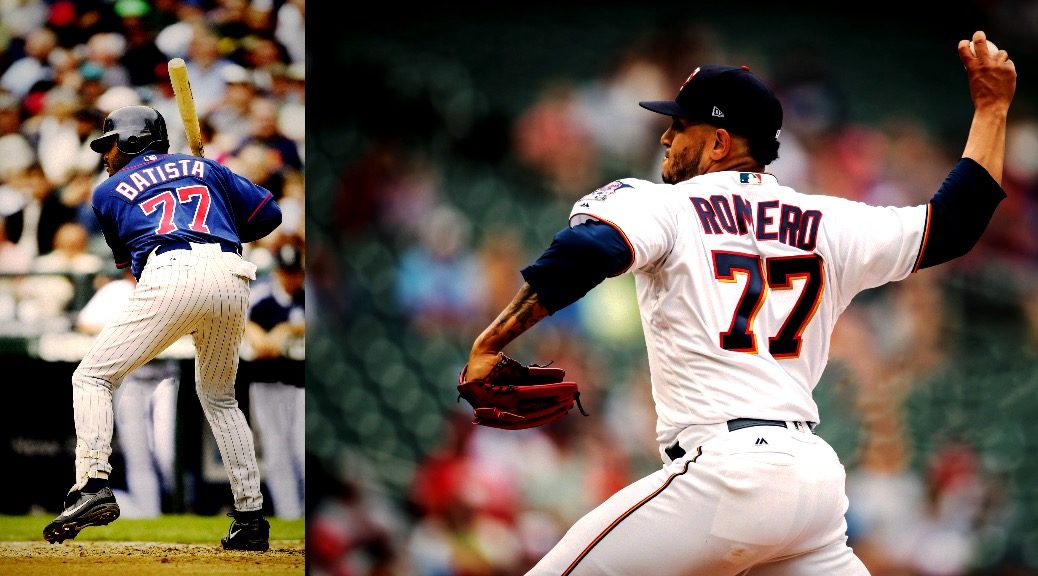
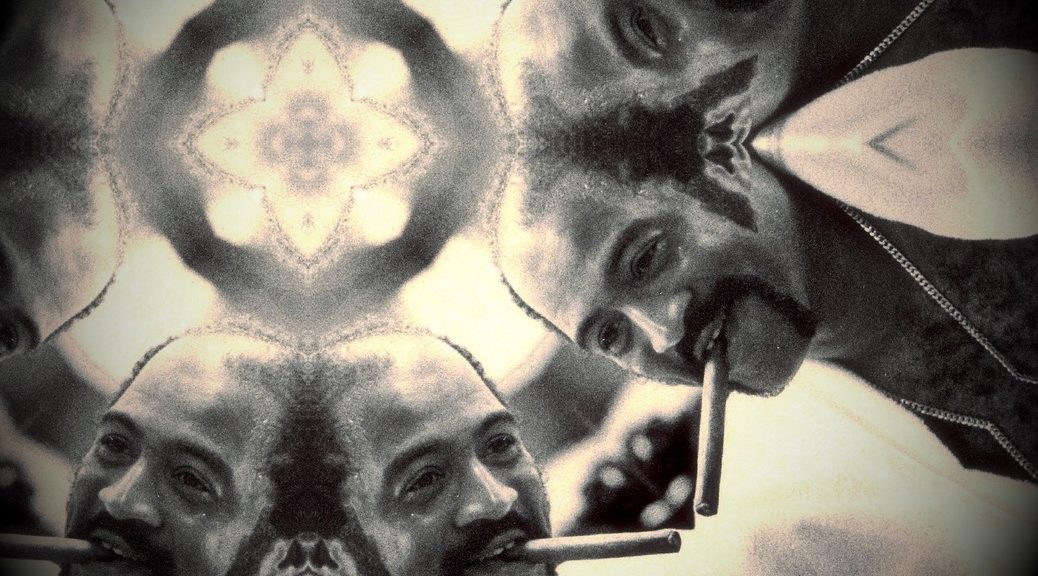
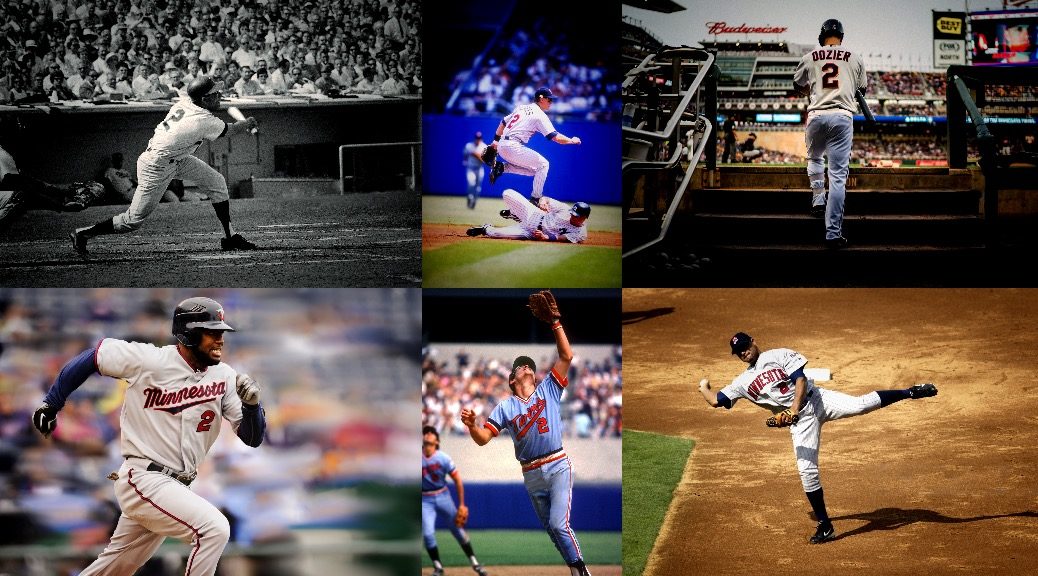
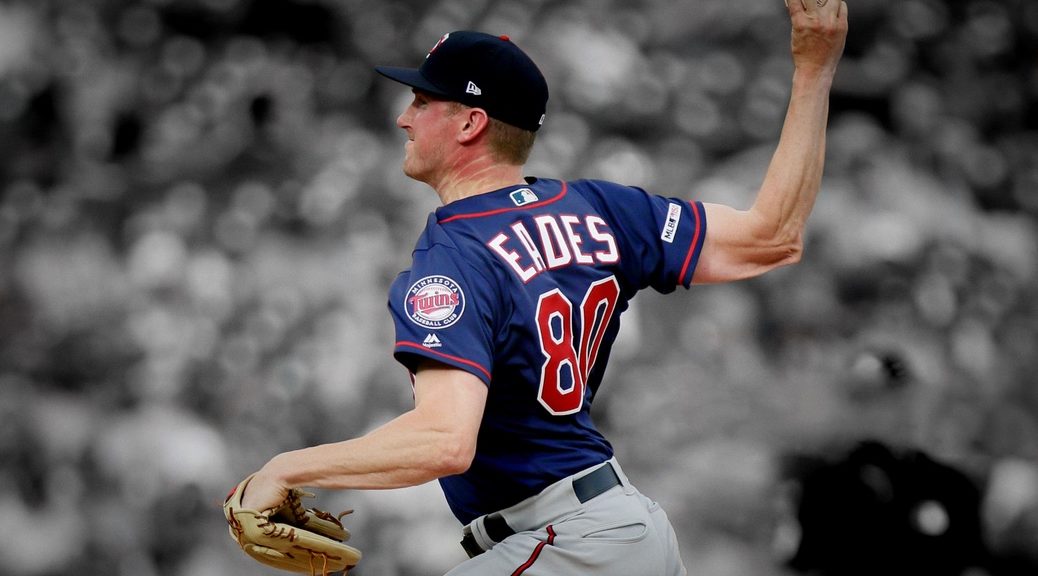
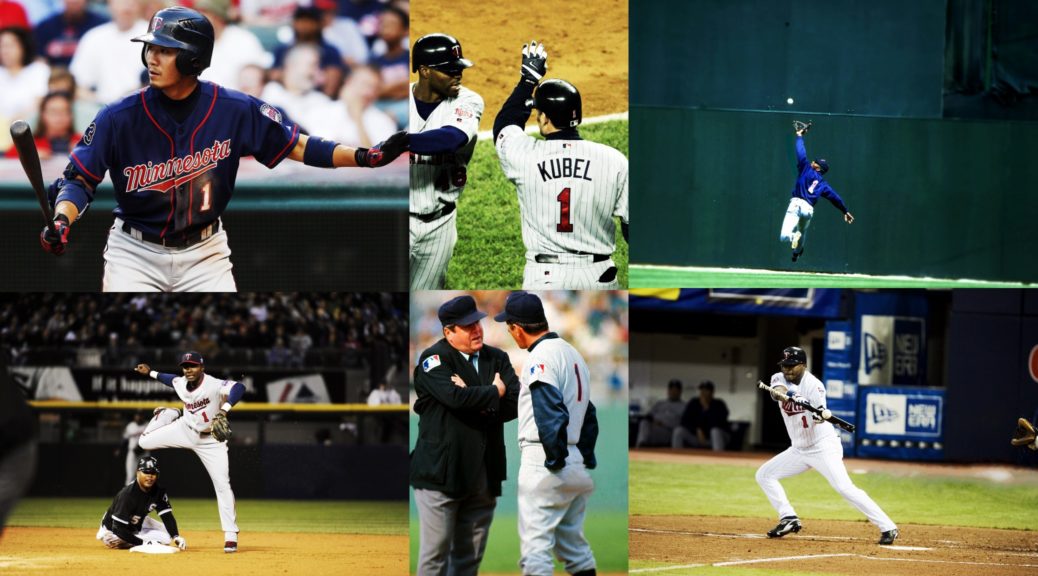
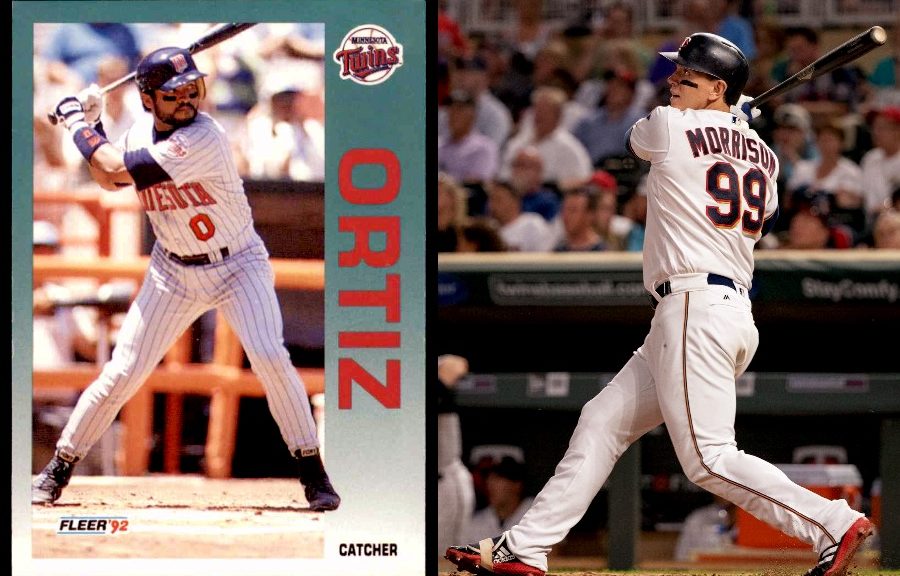
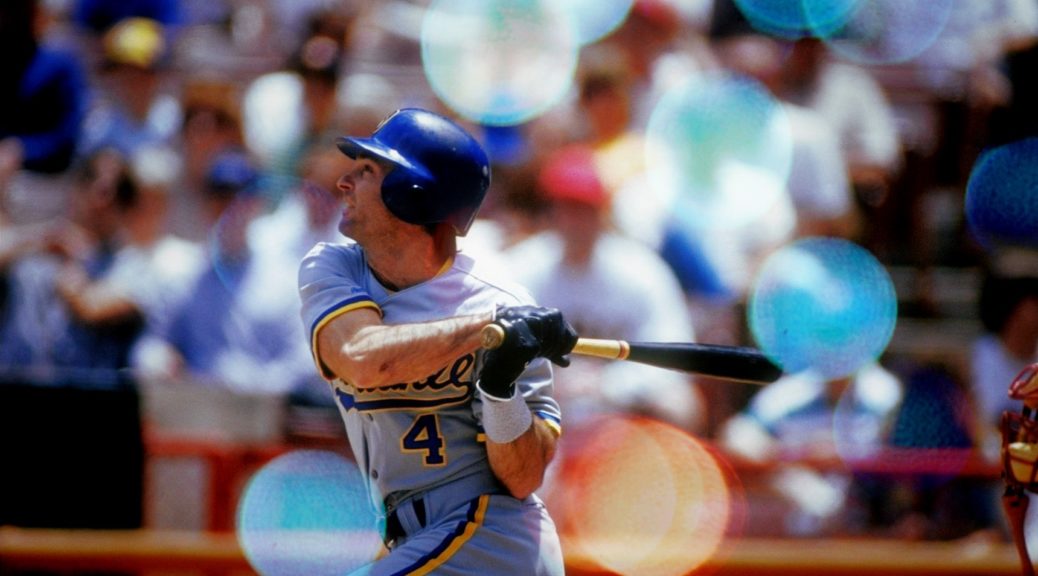


 (6 votes, average: 8.83 out of 10)
(6 votes, average: 8.83 out of 10)